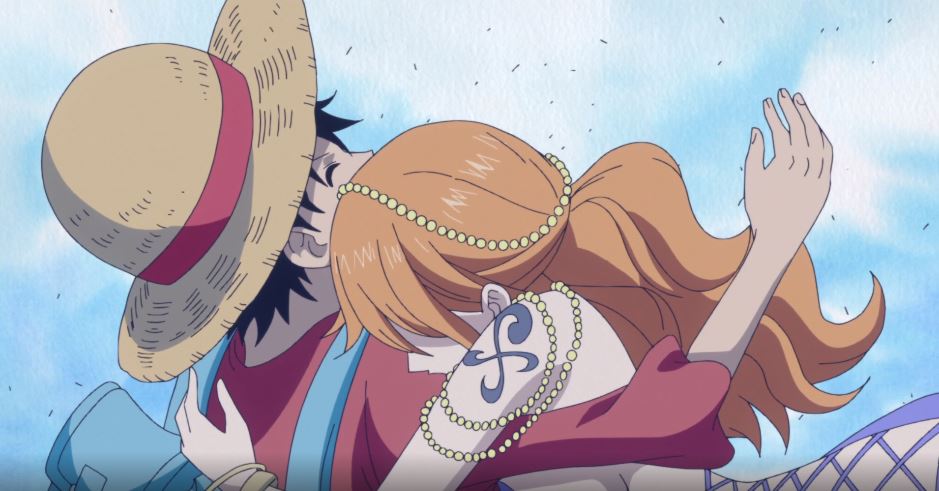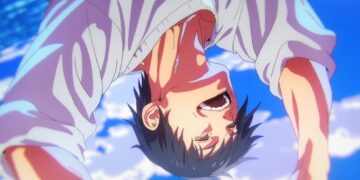When Nami made her debut in One Piece, she sported a simple T-shirt, a style that persisted throughout the initial arcs of the East Blue Saga. However, beneath this seemingly casual attire lay a hidden secret: a tattoo on her left shoulder symbolizing her allegiance to the Arlong Pirates.
The revelation of Nami’s tattoo occurred during the tumultuous events of the Arlong Park Arc, where she found herself trapped in a harrowing predicament. As the arc proceeded, Nami underwent a transformative journey, culminating in her decision to change the tattoo into something she could proudly display.
The significance of Nami’s new tattoo lies in its abstract nature, veiling its true meaning behind layers of symbolism. Depicting a mikan hanging from a stylized pinwheel, the design carries a profound significance known only to those intimately familiar with Nami’s past.
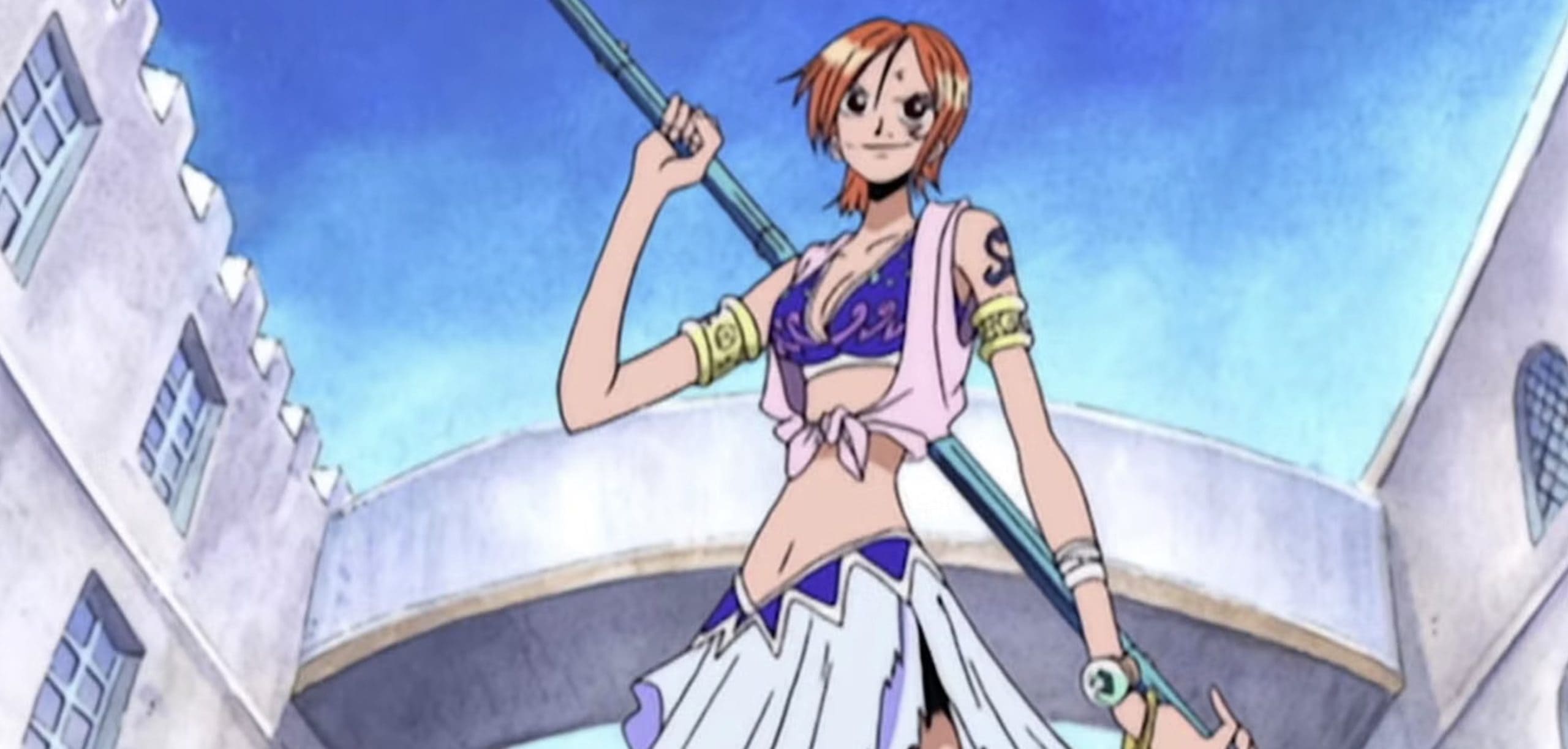
This emblem is more than mere ink etched onto her skin; it encapsulates a complex narrative woven through chapters of Nami’s history. Each element of the design holds deep-rooted connotations, reflecting pivotal moments and personal growth that shaped Nami’s identity.
The mikan, symbolizing prosperity and the bounty of nature, intertwines with the pinwheel, representing the ever-changing winds of fate. Together, they embody Nami’s resilience, adaptability, and unwavering determination in the face of adversity.
The nature of Nami’s tattoo mirrors her own complexity as a character. While outwardly she may appear guarded, the emblem serves as a silent witness to her inner strength and the intricacies of her past.
For Nami, her tattoo is not just a mark on her skin; it is a witness to her journey, a reminder of the challenges she has overcome, and a symbol of the person she has become.
Why Nami’s Love for Mikans Creates a Strong Connection
The mikan shape intricately woven into Nami’s tattoo holds profound significance, representing her adoptive mother, Bell-mère. Their journey began when Bell-mère, a former Marine, discovered Nami and her adoptive older sister, Nojiko, in a ravaged town.
Together, they returned to Cocoyashi Village, Bell-mère’s hometown, where they forged a bond and became a family. Living humbly as mikan farmers in a small cottage, they shared moments of love and hardship.
Despite the warmth of their home, Nami initially harbored feelings of discontent, yearning for a life of luxury with a wealthy family. This desire, intertwined with her upbringing, instilled in her a deep-seated love for money.
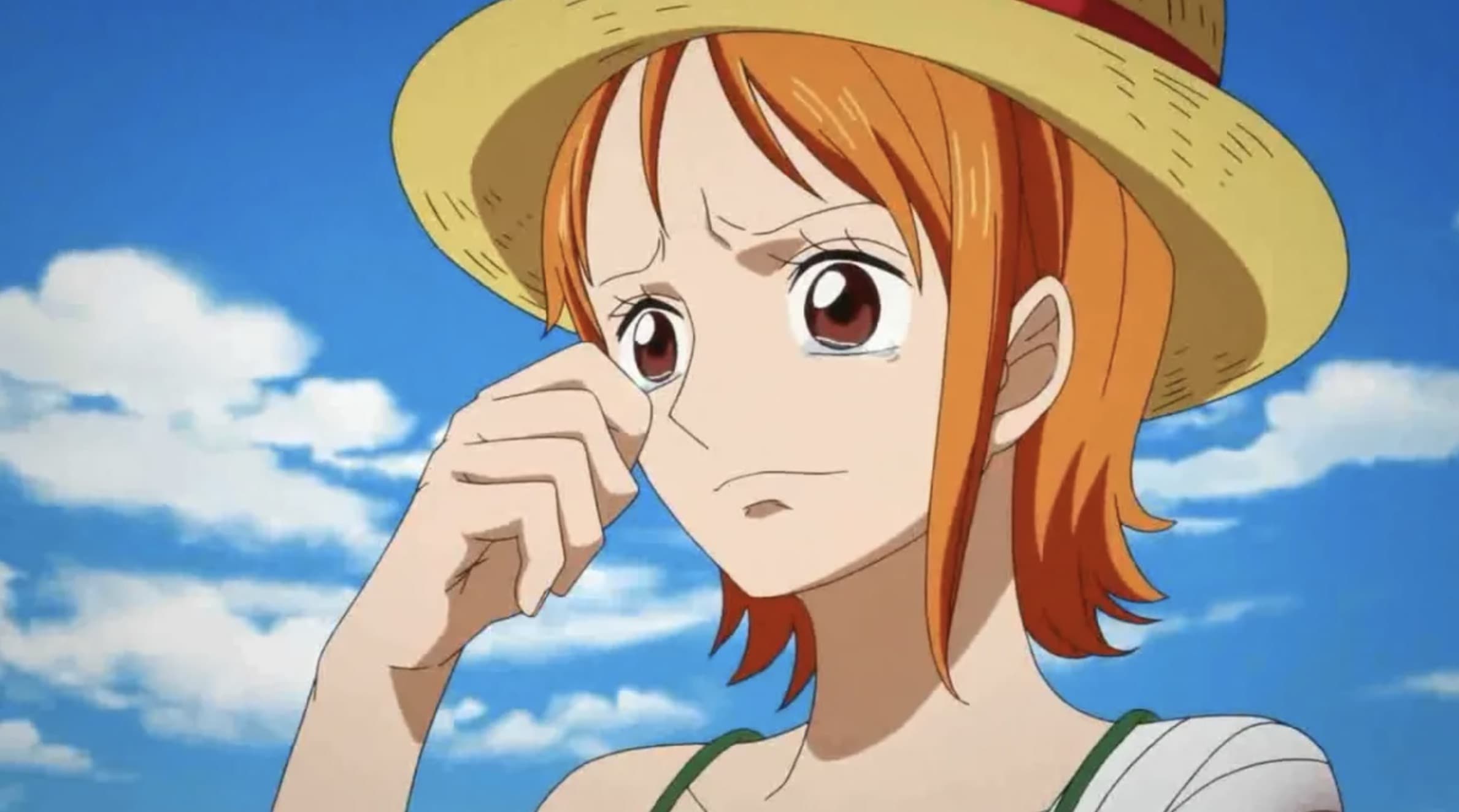
However, a pivotal moment occurred when Nami, in a fit of frustration, expressed her longing for a different life, prompting Bell-mère to slap her. This moment of conflict led Nami to learn the truth about her family’s formation from the town sheriff.
Tragically, Nami’s peaceful existence with Bell-mère was shattered by the invasion of the Arlong Pirates. Facing a cruel ultimatum, Bell-mère made the ultimate sacrifice to save her daughters, choosing to give her life so they could live. Her heartbreaking farewell, as she hugged Nami and Nojiko, left an indelible mark on Nami’s soul.
Throughout the East Blue Saga, the mikan emerged as a poignant symbol, intertwined with Nami’s journey. Even as she initially rejected Luffy’s invitation to join his crew, claiming her sole desires were money and mikans, this seemingly random tangent foreshadowed deeper connections to come.

Notably, the money Nami collected to free Cocoyashi Village from Arlong’s tyranny was buried beneath Bell-mère’s mikan grove, symbolizing her enduring legacy.
Following the climax of the Arlong Park Arc, Nami took three mikan trees aboard the Going Merry and later the Thousand Sunny, preserving the memory of Bell-mère and the sacrifices she made for her and Nojiko.
Why Pinwheels Matter in Understanding Nami’s Character
The mikan in Nami’s tattoo, entwined with a stylized pinwheel, holds a dual significance representing two important figures in her life. The pinwheel symbolizes Genzo, the quirky sheriff of Cocoyashi Village, who served as a father figure to Nami.
Despite being further removed from Nami’s life compared to her mother, Bell-mère, Genzo’s love and protective instincts were just as strong. As the acting lawman of the village, he maintained a stern demeanor when addressing Nami’s mischievous behavior, such as her penchant for stealing books from the local library.
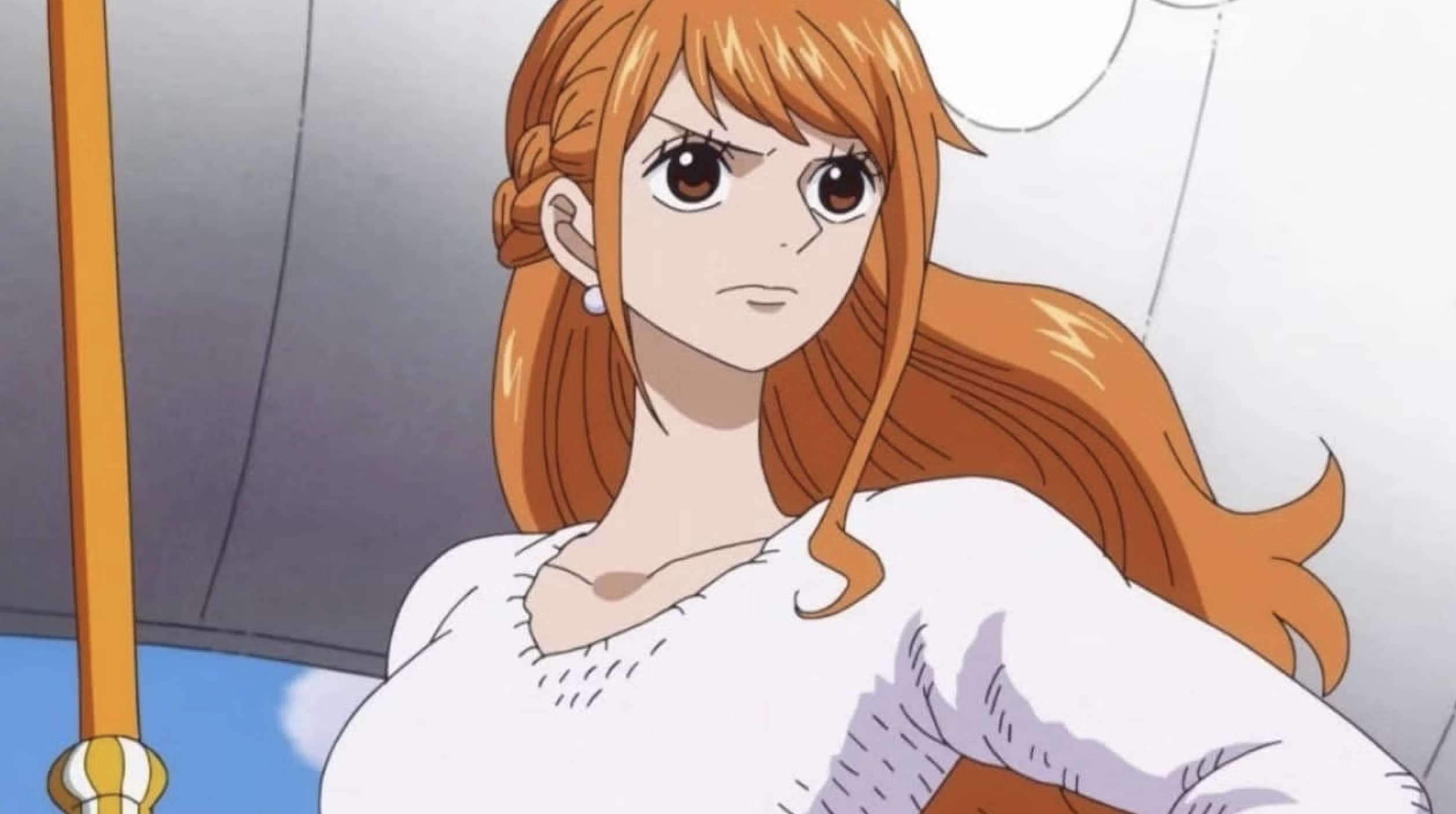
However, beneath his tough exterior, Genzo harbored a deep affection for Nami, offering her guidance and support when needed.
During Nami’s ordeal with the Arlong Pirates, Genzo’s fatherly devotion became even more evident. He bravely attempted to rescue her when she was first kidnapped, enduring scars from his confrontation with Kuroobi in the process.
Later, despite Nami’s attempts to deceive the villagers about her alliance with Arlong, Genzo and the others stood by her side, ready to confront the tyrannical pirate or perish in the attempt.
Throughout the tumultuous events, Genzo remained a pillar of strength for Nami, offering comfort and rallying the village to support her cause. Even in the heat of battle, he made it clear to Luffy that he would protect Nami’s happiness at any cost.
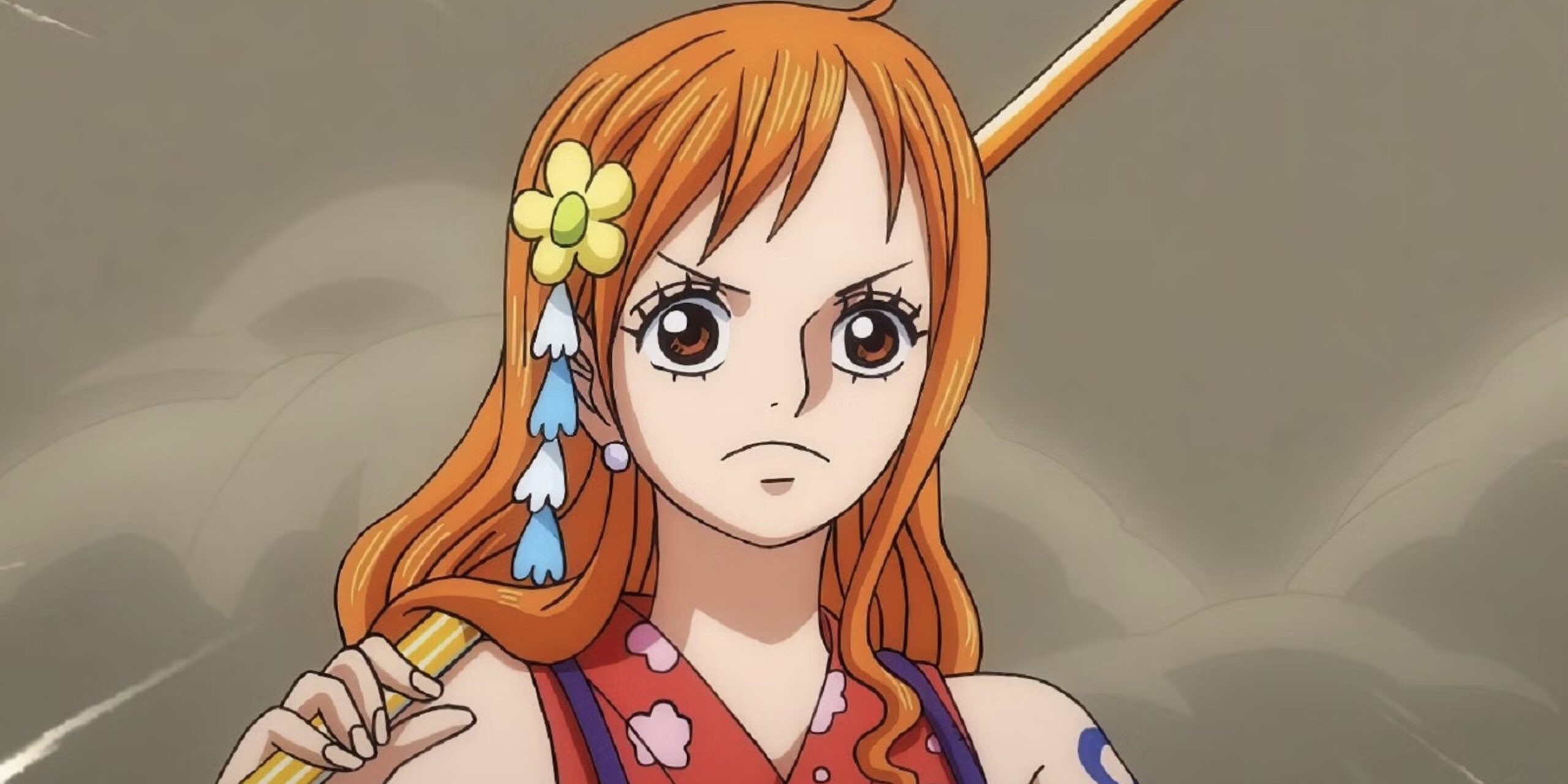
The pinwheel held a special significance for both Nami and Genzo, symbolizing their bond and Genzo’s enduring love for his surrogate daughter.
Its presence in his hat, initially intended to soothe Nami as a baby, became a cherished symbol of their connection, even as Nami ventured into the world as a member of the Straw Hat Pirates.
Upon Nami’s departure with her newfound family, Genzo retired the pinwheel, leaving it as a tribute to Nami and Bell-mère at her grave. Nami’s decision to incorporate the pinwheel into her tattoo reflects her recognition of Genzo’s unwavering love and support throughout her journey, serving as a poignant reminder of the familial bonds that shaped her life.
Nami’s Ink Revelation: Understanding the Origin and Significance
Nami’s tattoo journey took a dramatic turn when she first adorned her shoulder with the emblem of the Arlong Pirates’ Jolly Roger, featuring a stylized sawshark in homage to the crew’s leader.
This unexpected twist shocked those who knew her, as it marked her allegiance to the pirate crew following a deal with Arlong to secure the freedom of Cocoyashi Village.
However, the tattoo became more than just a symbol of loyalty; it became a reminder of Nami’s entrapment and the sacrifices she made to protect her loved ones.
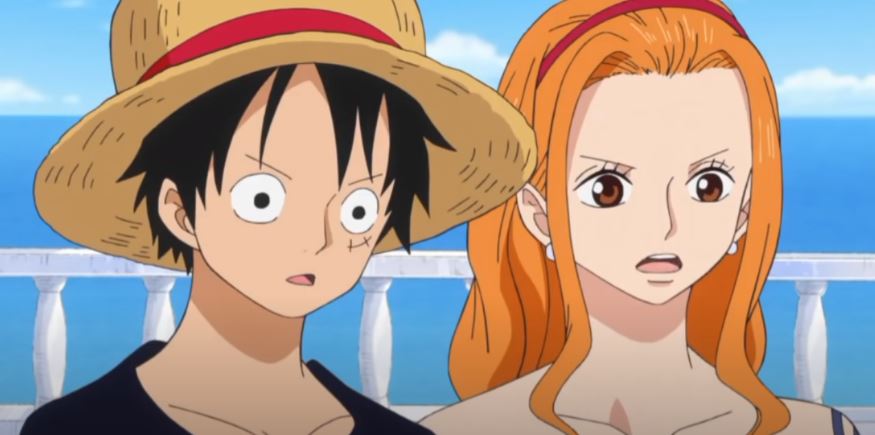
Faced with the looming threat of the Arlong Pirates, Nami chose to deceive both her village and later the Straw Hat Pirates, feigning allegiance to Arlong to spare them from danger.
Yet, as the village suffered under the oppression of the Arlong Pirates and Nami’s savings were cruelly swindled away, her fury and frustration reached a boiling point.
In a desperate act of defiance, she lashed out at the tattoo, repeatedly stabbing her shoulder with a knife—a visceral expression of her pent-up anger and helplessness.
It was only with the support of her friends, particularly Luffy, that Nami found the courage to confront her tormentors and seek redemption. After the Arlong Pirates were vanquished and the wounds of battle tended to, Nami sought to erase the painful reminder of her past by having the Jolly Roger removed.
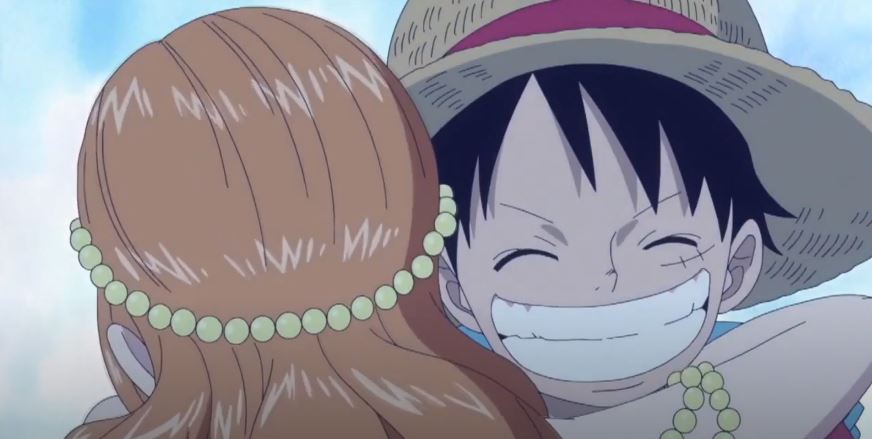
In its place, she opted for a new design—a mikan intertwined with a pinwheel—symbolizing her journey of healing, resilience, and the cherished memories of her mother and village.
While scars from her self-inflicted wounds initially lingered, they eventually faded from view, perhaps omitted by artists to preserve Nami’s beauty or to streamline storytelling.
Yet, some fans argue that retaining the scars would have added depth to Nami’s character, akin to the visible marks borne by Luffy and Zoro as witnesses to their trials and growth.
Regardless, Nami’s tattoo journey remains a poignant reflection of her resilience and evolution throughout her adventures with the Straw Hat Pirates.
Nami’s Mikan and Pinwheel Motif
Nami’s affinity for pinwheels and mikans extends beyond her tattoo, serving as integral elements of her design motif and character development.
While Nami may not frequently vocalize her fondness for these symbols, they manifest in subtle yet significant ways throughout her journey with the Straw Hat Pirates. Scenes depicting her tending to the mikan trees aboard the ship, with Sanji fiercely guarding them against Luffy’s voracious appetite, showcase her attachment to the citrus fruit. Additionally, the SBS has gone into Nami’s intimate love for Mikans, further emphasizing their importance to her.
Beyond simply consuming raw mikans, Nami’s culinary preferences reflect her appreciation for their flavor, such as enjoying roasted duck or sunny-side-up fried eggs drizzled with mikan sauce. Even her scent, redolent of mikans and money, underscores the fruits’ significance in her life.

While pinwheels may be less prominent compared to mikans, they occasionally make appearances in non-canon material, such as anime openings and endings, whenever Nami is involved.
These symbols serve as visual reminders of Nami’s identity and upbringing, embodying the teachings she gleaned from her parental figures.
From Bell-mère, Nami learned about the importance of feminine charms, tempered mischief, and the value of honesty—even in the face of adversity. Meanwhile, Genzo instilled in her a sense of discipline and accountability, shaping her into a pragmatic and assertive individual who refuses to tolerate foolishness from her crewmates.
In this way, Nami’s personality and actions are as indicative of her character as the tattoo adorning her shoulder. Through her interactions and choices, she embodies the essence of the mikan and the pinwheel, each symbolizing aspects of her upbringing, values, and personal growth.

